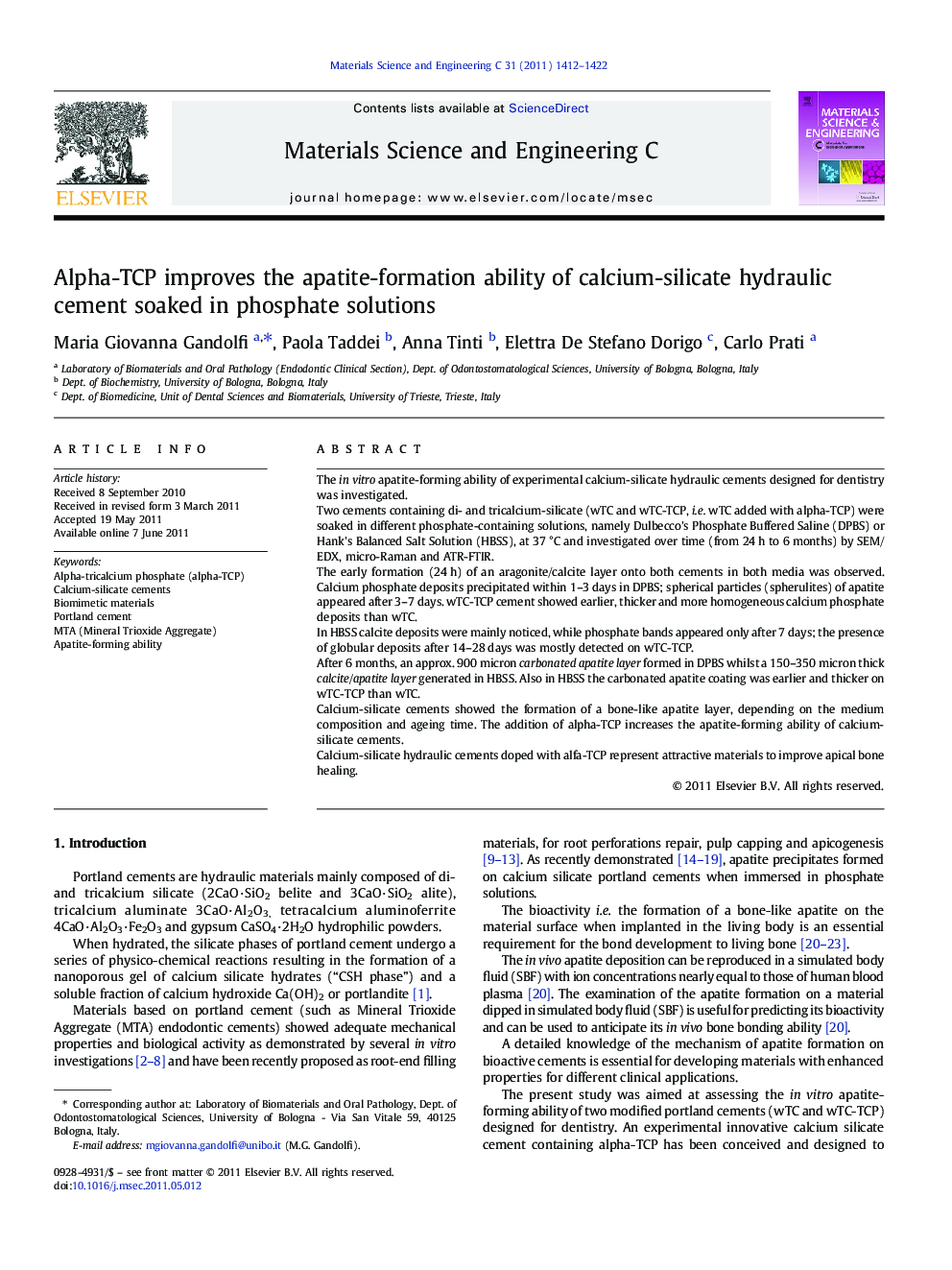| Article ID | Journal | Published Year | Pages | File Type |
|---|---|---|---|---|
| 1429728 | Materials Science and Engineering: C | 2011 | 11 Pages |
The in vitro apatite-forming ability of experimental calcium-silicate hydraulic cements designed for dentistry was investigated.Two cements containing di- and tricalcium-silicate (wTC and wTC-TCP, i.e. wTC added with alpha-TCP) were soaked in different phosphate-containing solutions, namely Dulbecco's Phosphate Buffered Saline (DPBS) or Hank's Balanced Salt Solution (HBSS), at 37 °C and investigated over time (from 24 h to 6 months) by SEM/EDX, micro-Raman and ATR-FTIR.The early formation (24 h) of an aragonite/calcite layer onto both cements in both media was observed. Calcium phosphate deposits precipitated within 1–3 days in DPBS; spherical particles (spherulites) of apatite appeared after 3–7 days. wTC-TCP cement showed earlier, thicker and more homogeneous calcium phosphate deposits than wTC.In HBSS calcite deposits were mainly noticed, while phosphate bands appeared only after 7 days; the presence of globular deposits after 14–28 days was mostly detected on wTC-TCP.After 6 months, an approx. 900 micron carbonated apatite layer formed in DPBS whilst a 150–350 micron thick calcite/apatite layer generated in HBSS. Also in HBSS the carbonated apatite coating was earlier and thicker on wTC-TCP than wTC.Calcium-silicate cements showed the formation of a bone-like apatite layer, depending on the medium composition and ageing time. The addition of alpha-TCP increases the apatite-forming ability of calcium-silicate cements.Calcium-silicate hydraulic cements doped with alfa-TCP represent attractive materials to improve apical bone healing.
► An innovative alpha-tricalciumphosphate doped calcium-silicate cement is designed. ► The cement was developed for endodontic surgery (root-end cavities and exposed pulp). ► An apatite layer forms on cement surface in simulated body fluids. ► The coating is mainly composed of bone-like carbonated apatite. ► Alpha-TCP improves the apatite-forming ability of calcium-silicate MTA cements.
